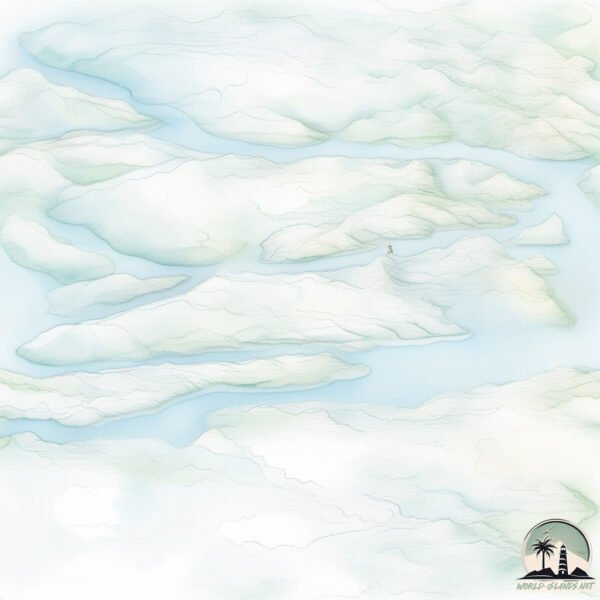Milne Land

Welcome to Milne Land, a Polar island in the Greenland Sea, part of the majestic Arctic Ocean. This guide offers a comprehensive overview of what makes Milne Land unique – from its geography and climate to its population, infrastructure, and beyond. Dive into the details:
- Geography and Size: Explore the island’s size and location.
- Climate and Weather: Weather patterns and temperature.
- Topography and Nature: Uncover the natural wonders of the island.
- Infrastructure and Travelling: Insights on reaching, staying, and making the most of your visit.
- News and Headlines: Latest News.
Geography and size of Milne Land
Size: 3713 km²
Coastline: 550 km
Ocean: Arctic Ocean
Sea: Greenland Sea
Continent: North America
Milne Land is a Very Large Island spanning 3713 km² with a coastline of 550 km.
Archipel: –
Tectonic Plate: North America – Covers North America and parts of the Atlantic and Arctic Oceans, characterized by diverse geological features and varying levels of seismic activity.
The geographic heart of the island is pinpointed at these coordinates:
Latitude: 70.70756169 / Longitude: -26.53161287
Climate and weather of Milne Land
Climate Zone: Polar
Climate Details: Tundra
Temperature: Cold
Climate Characteristics: The tundra climate features long, extremely cold winters and short, cool summers. Vegetation is limited to mosses, lichens, and small shrubs due to the low temperatures and short growing seasons. Biodiversity is low, but some specialized species thrive.
Topography and nature of Milne Land
Timezone: UTC-03:00
Timezone places: America/Sao_Paulo
Max. Elevation: 2200 m Milne Land HP
Mean Elevation: 1044 m
Vegetation: Snow and Ice Covered
Tree Coverage: 18%
The mean elevation is 1044 m. Dominating the island’s landscape, the majestic “Milne Land HP” rises as the highest peak, soaring to impressive heights. The island is characterized by Mountains: High, steeply elevated landforms. Characterized by both a high maximum elevation (over 500 meters) and a high mean elevation, creating rugged, mountainous terrains on islands.
Dominating Vegetation: Snow and Ice Covered
These areas are permanently or seasonally covered in snow and ice, with little to no vegetation, such as polar regions and high mountains. Milne Land has a tree cover of 18 %.
Vegetation: 6 vegetation zones – Very Highly Diverse Island
Islands in this range are ecological powerhouses, showcasing a wide array of vegetation zones. Each zone, from lush rainforests to arid scrublands, coastal mangroves to mountainous regions, contributes to a complex and interdependent ecosystem. These islands are often hotspots of biodiversity, supporting numerous species and intricate ecological processes.
Infrastructure and Travelling to Milne Land
Does the island have a public airport? no.
There is no public and scheduled airport on Milne Land. The nearest airport is Neerlerit Inaat Airport, located 291 km away.
Does the island have a major port? no.
There are no major ports on Milne Land. The closest major port is BOLUNGAVIK, approximately 548 km away.
The mean population of Milne Land is 0 per km². Milne Land is Uninhabited. The island belongs to Denmark.
The name of the island resonates across different cultures and languages. Here is how it is known around the world: Arabic: جزيرة غرينلاند; German: Grönland; Spanish: Groenlandia; French: Groenland; Portuguese: Groenlândia; Russian: Гренландия; Chinese: 格陵兰岛
Continuing your journey, Sorte is the next notable island, situated merely km away.
Denmark is classified as Developed region: nonG7: Developed economies outside of the Group of Seven, characterized by high income and advanced economic structures. The level of income is High income: OECD.
News – Latest Updates and Headlines from Milne Land
Stay informed with the most recent news and important headlines from Milne Land. Here’s a roundup of the latest developments.
Social Media Posts about Milne Land
Please note: The data used here has been primarily extracted from satellite readings. Deviations from exact values may occur, particularly regarding the height of elevations and population density. Land area and coastline measurements refer to average values at mean high tide.
